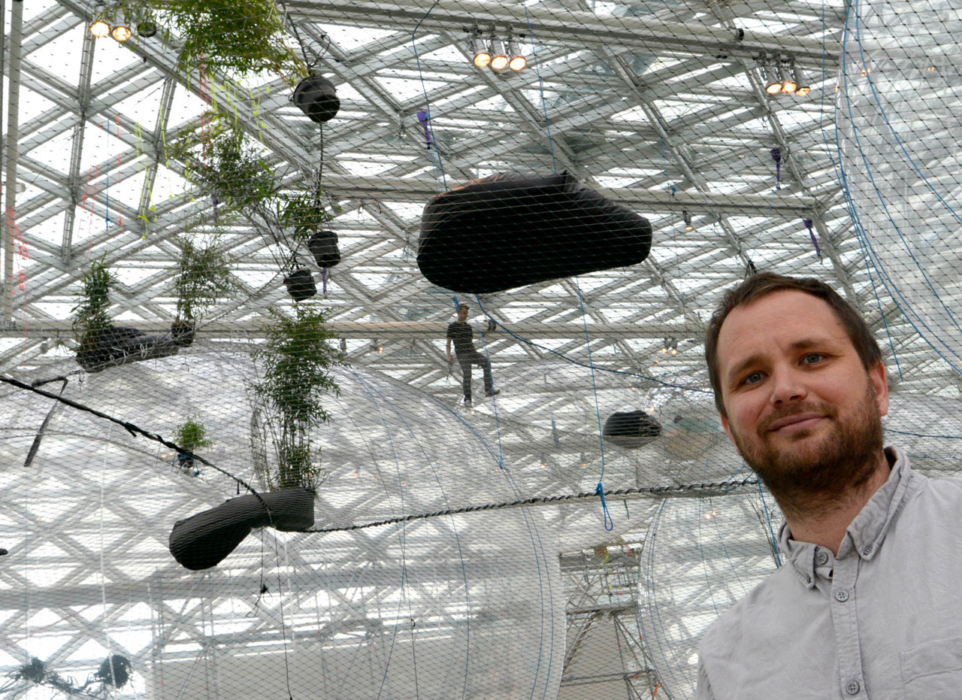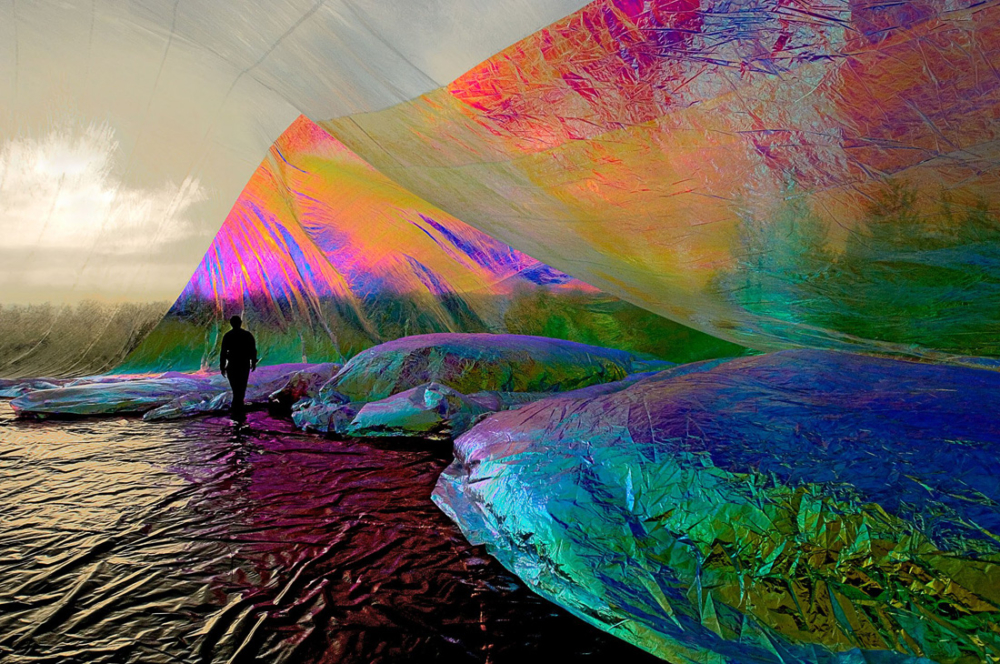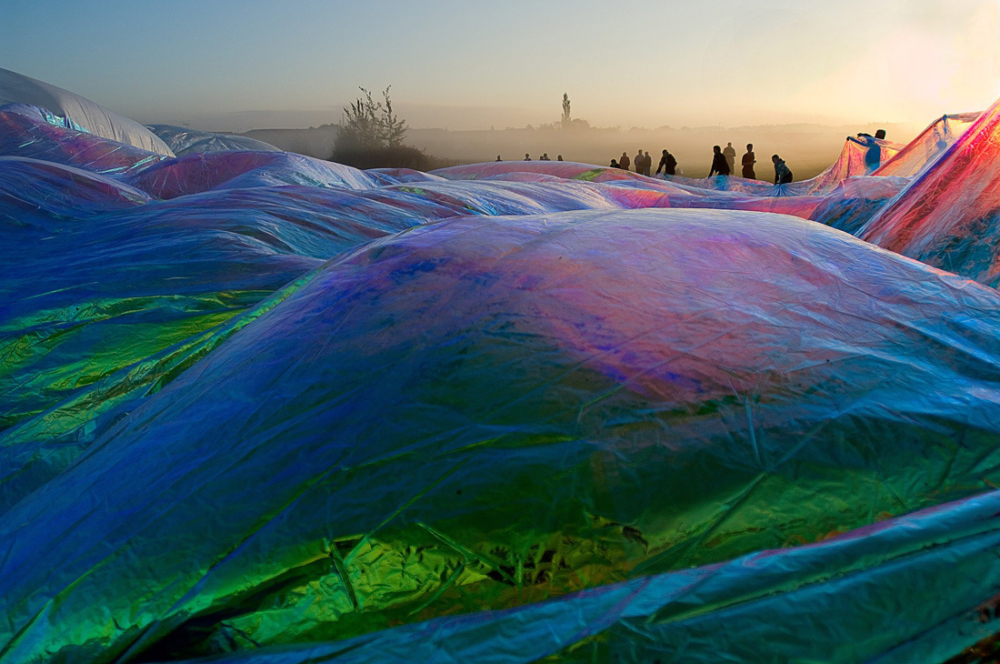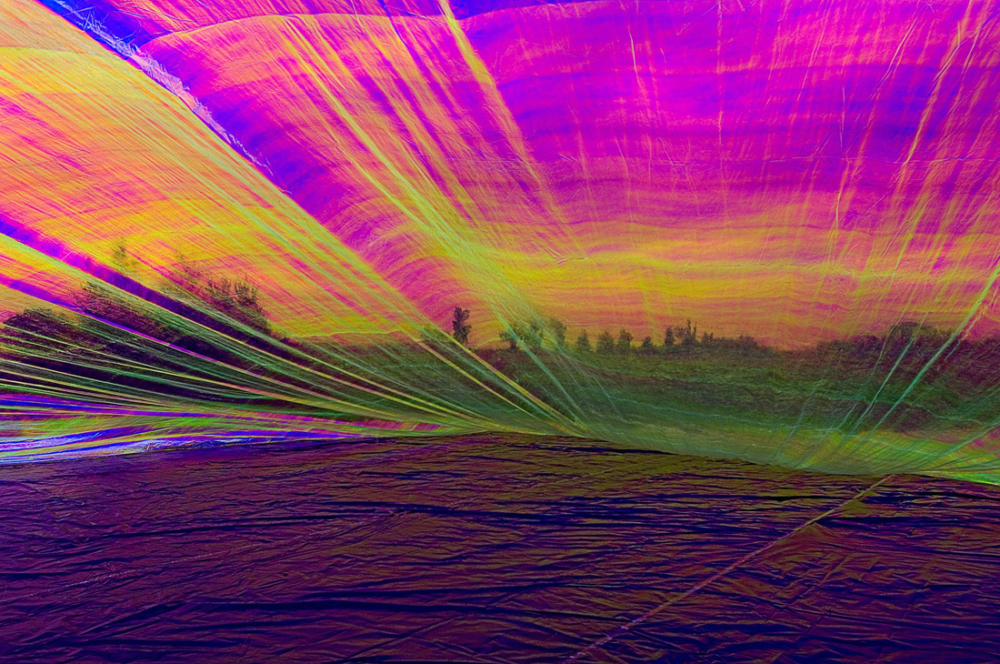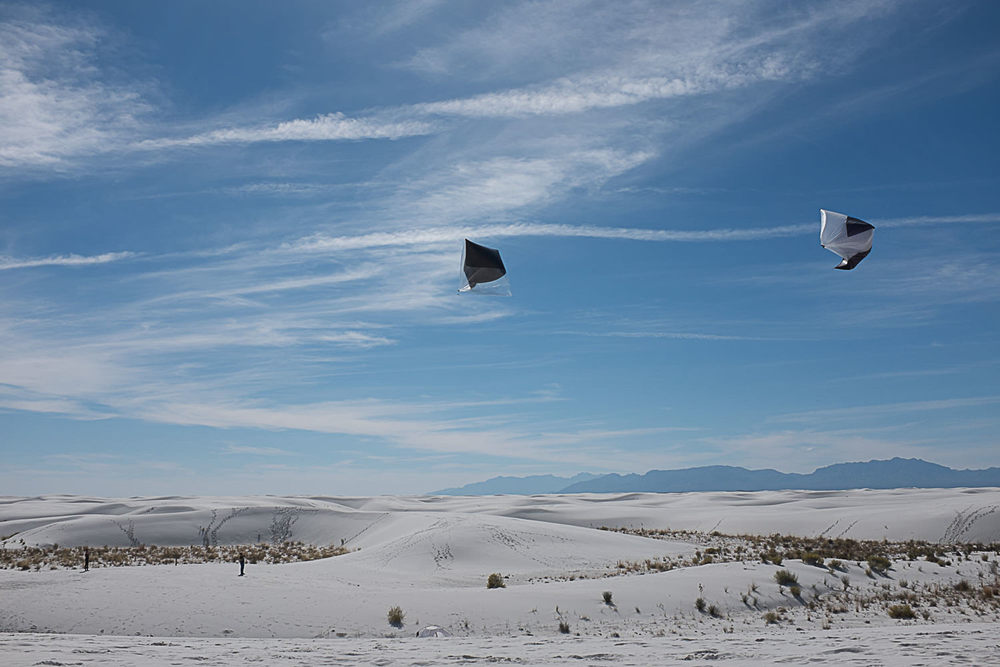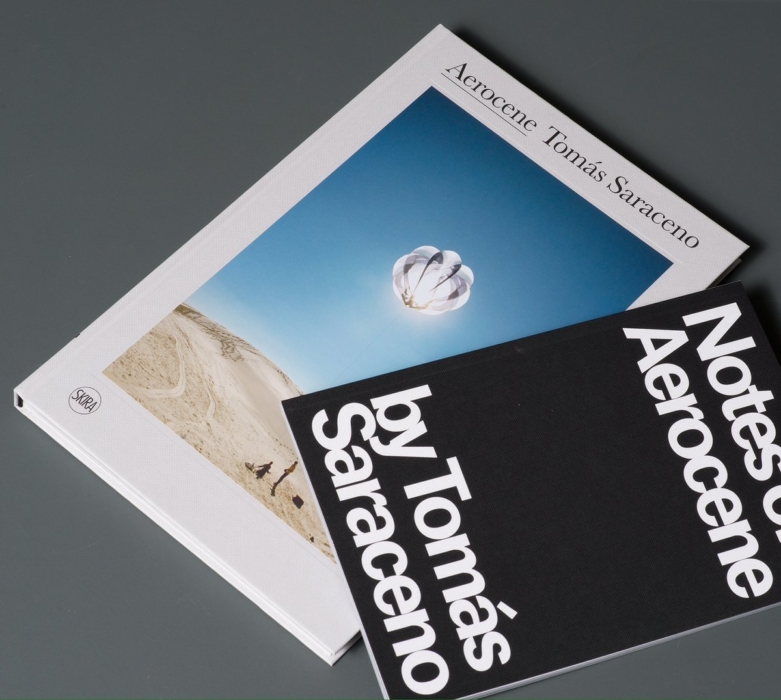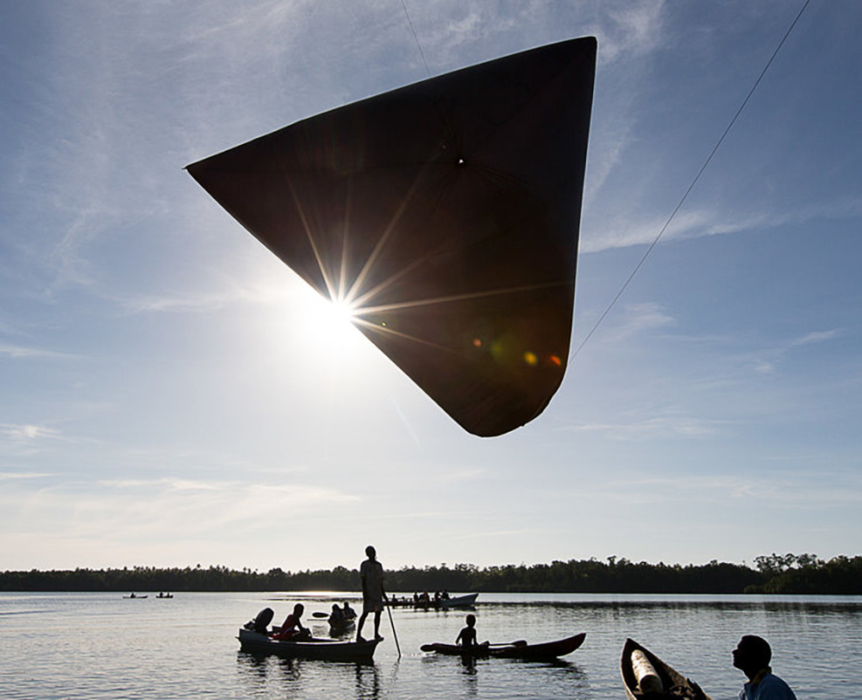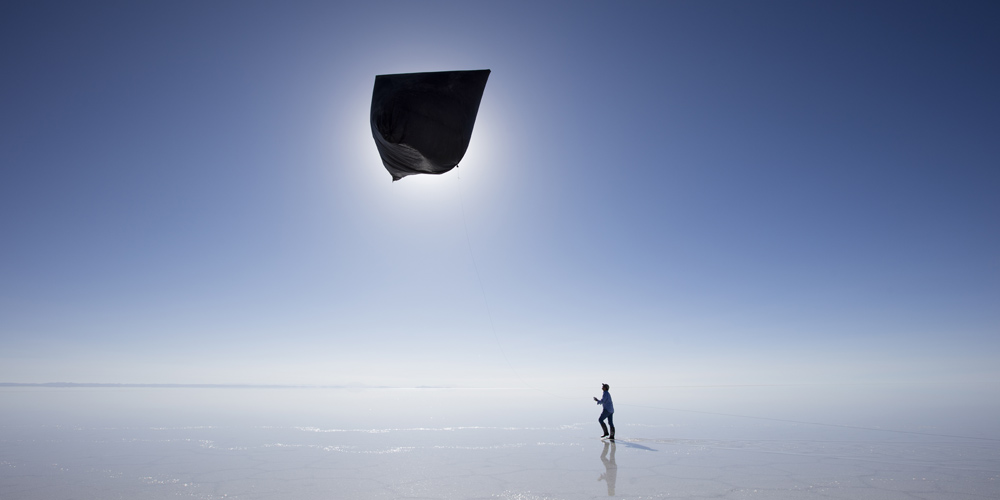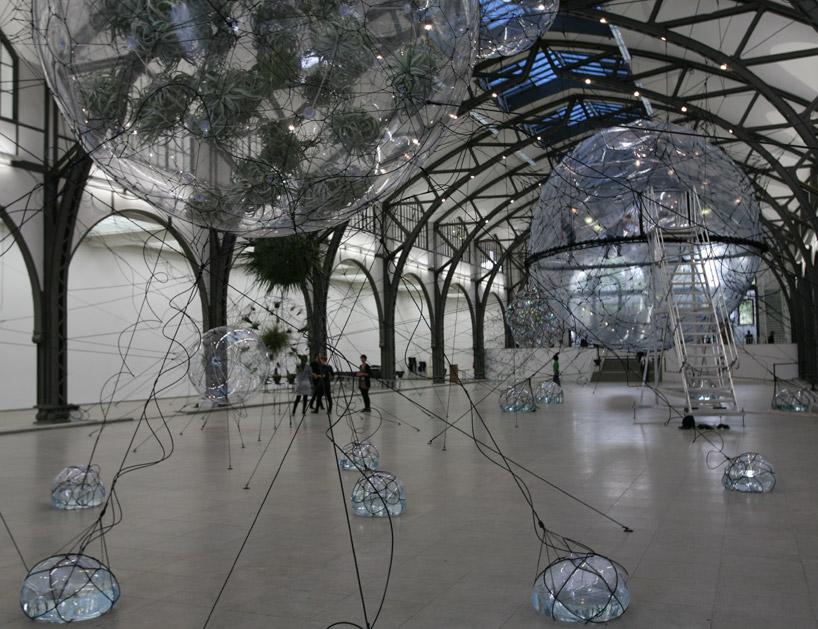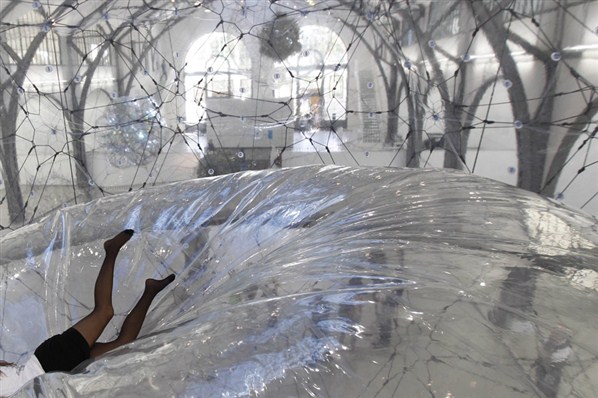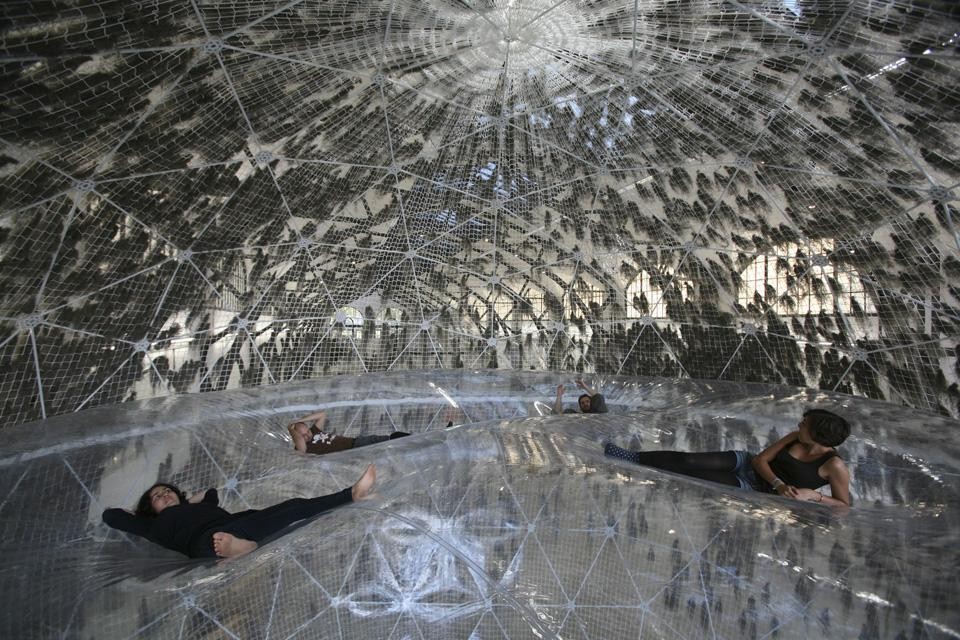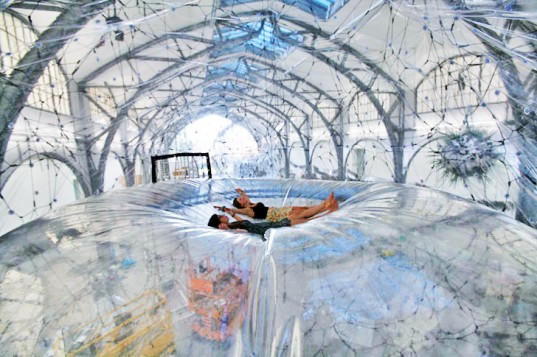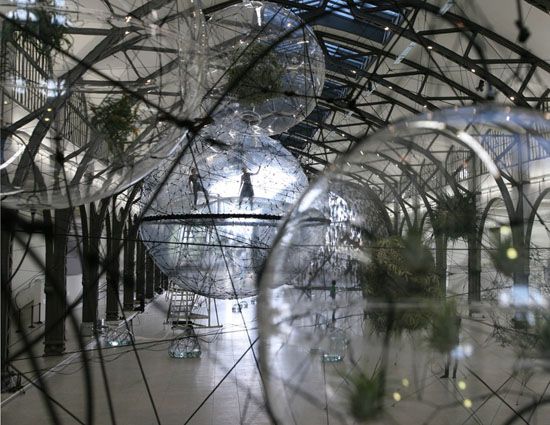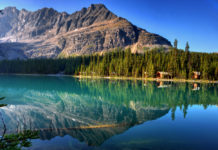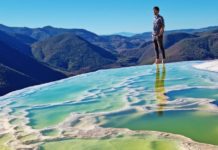An educated architect, Tomas Saraseno uses the ideas of engineers, physics, chemistry, aeronautics and materials science in his work. It creates inflatable and airborne biospheres with the morphology of soap bubbles, cobwebs, neural networks or cloud formations that are speculative models of an alternative lifestyle for a sustainable future.
He is best known for his large-scale interactive installations and floating sculptures, as well as his multidisciplinary approach to art. His work explores new sustainable ways of perceiving and living in the environment, the result of a study of the origin of the observable universe, arachnology and potential future dwellings in the air. Consider the various installations presented in various museums around the world that have so glorified the Aregntin artist.
Material Content:
Poetic space of breath
With his works, the Argentine artist goes beyond the traditional notions of place, time, gravity and our usual notions of architecture. Saraceno is an artist and architect who has his own vision of cities floating in the air. This is precisely what led him to create a series of experimental designs.
Saraceno recreates balloons or inflatable modular platforms that can be inhabited and that can use natural energy. Any of his subjects is a call to think about alternative knowledge, about emotions and interaction. For example, before you install "Poetic space of breath", an experimental solar dome that became part of the 2nd International Artists Air Show "Art Catalyst".
At dawn, a crowd was formed around a giant multi-colored round foil, chained to the edges with sandbags. Throughout the morning, the artist and his team gradually filled the foil with air, and visitors could stroll through this stunning color wonderland, which is simply magical, unique and full of positive energy.
A witness to this event noted: “Gradually, we helped the giant fill up with air and grow when the sun rose. The dome is surprisingly beautiful, especially when the sun is reflected on the foil. ”
The project was inspired by the dome created by Dominic Michaelis in 1975 for the film Man.
Aerocene
Aerocene - This is an interdisciplinary project that offers a new era. After debating about the anthropocene, he highlights the artistic and scientific study of environmental issues and promotes the overall connections between social, mental and physical ecology.
The publication is a synthesis of knowledge about art, technology and the environment, thereby expanding the Aerocene as a vision of travel and life in an atmosphere without fossils and emissions.
Aerosol sculptures were officially unveiled during the UN Climate Change Conference in Paris. After which a similar prototype was tested in November on the White Sand Dunes of New Mexico. On November 8, 2015, he broke world records by completing the longest and most stable certified flight (without fossil fuels, solar panels or helium) ever recorded: for about 2 hours and 15 minutes, seven people flew over the desert landscape.
Cloud cities
The famous installation that won the hearts of millions of people. Saraseno's art research project (from 2002 to the present) draws inspiration from Buckminster Fuller and other radical architects. The aim of the project is to create a modular, transnational city in the clouds, the implementation of which will become a new model for the release and sustainable construction methods.
Exhibition Cloud Cities ("Cloud Cities"), presented in Hamburg train station in 2011-12 (at one of the most popular museums of modern art), it consisted of a collection of geometric, swollen shapes that challenge the ideas of place, space, future and gravity.
By the way, Hamburg Station is currently a branch of the New National Gallery - the Museum of Modernity.
During the exhibition, Saraceno tried to explain how people live in interaction with the environment. As curator and art historian Moritz Wesseler notes, “The aspect that is of great importance to Saraseno in this context is that the shape and size of the city can be constantly changed, criticizing traditional ideas about borders and territories. (...) The works that he creates as part of this study can be considered a kind of components for the future cloud city, which can be assembled to create the desired complex in its entirety, but these components also exist in isolation, like independent sculptures or installations exhibiting forces and their own qualities that make them extremely fascinating designs. "
The same picture is reproduced at all levels of the structure, from its micro to its macrocomponents, forming what can be called a neoplatonic space scheme.
Entering the top layer of these shaky domes, visitors awestruck suddenly realize how unstable the structure is and realize the effect of each movement on the structure and, therefore, on each other visitor.
What installation would you like to see with your own eyes?


